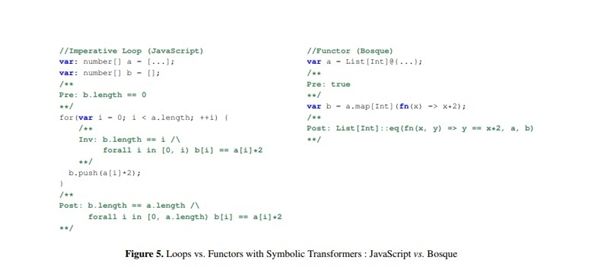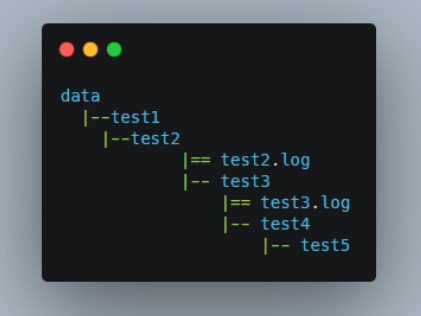深入理解Python配置文件
 发布于2024-12-13 阅读(0)
发布于2024-12-13 阅读(0)
扫一扫,手机访问
Python中config讲解,需要具体代码示例
导言
在编写Python程序时,我们经常需要使用一些配置文件来存储程序的参数和设置。这些配置文件可以让我们轻松修改程序的行为,而无需改动代码。Python提供了许多方法来处理配置文件,其中一种常见的方法是使用configparser模块。本文将详细讲解如何在Python中使用configparser来处理配置文件,并提供具体的代码示例。
- 安装configparser模块
在开始使用configparser之前,我们需要先安装这个模块。在终端或命令行中运行以下命令来安装configparser模块:
pip install configparser
- 创建配置文件
接下来,我们可以创建一个配置文件,比如config.ini,用来存储程序的设置。配置文件通常使用INI格式,它包含一些节(section)和键值对(key-value)。每个节可以有多个键值对。
具体的配置文件内容如下:
[Server] host = localhost port = 8080 [Database] username = admin password = 123456 database = mydb
这个配置文件包含了两个节:Server和Database。在Server节中,我们定义了host和port两个键值对,分别表示服务器的主机名和端口号。在Database节中,我们定义了username、password和database三个键值对,分别表示数据库的用户名、密码和名称。
- 读取配置文件
有了配置文件之后,接下来我们可以使用configparser模块来读取配置文件中的设置。下面是一个简单的读取配置文件的代码示例:
import configparser
# 创建ConfigParser对象
config = configparser.ConfigParser()
# 读取配置文件
config.read('config.ini')
# 获取Server节中的host和port
server_host = config.get('Server', 'host')
server_port = config.get('Server', 'port')
# 获取Database节中的username、password和database
db_username = config.get('Database', 'username')
db_password = config.get('Database', 'password')
db_name = config.get('Database', 'database')
# 打印配置信息
print(f"Server host: {server_host}")
print(f"Server port: {server_port}")
print(f"Database username: {db_username}")
print(f"Database password: {db_password}")
print(f"Database name: {db_name}")上述代码首先创建了一个ConfigParser对象,然后调用read方法读取配置文件。接下来,我们使用get方法从配置文件中获取相应的值,并将其存储在变量中。最后,使用print语句打印配置信息。
- 修改配置文件
一旦我们有了配置文件和读取配置文件的代码,我们可以轻松地修改配置文件来改变程序的行为。下面是一个修改配置文件的代码示例:
import configparser
# 创建ConfigParser对象
config = configparser.ConfigParser()
# 读取配置文件
config.read('config.ini')
# 修改Server节中的host和port
config.set('Server', 'host', 'example.com')
config.set('Server', 'port', '9000')
# 修改Database节中的username、password和database
config.set('Database', 'username', 'new_username')
config.set('Database', 'password', 'new_password')
config.set('Database', 'database', 'new_database')
# 保存修改后的配置文件
with open('config.ini', 'w') as config_file:
config.write(config_file)上述代码首先读取配置文件,然后使用set方法修改相应的值,最后调用write方法将修改后的配置文件保存到原来的文件中。
总结
本文介绍了在Python中使用configparser模块处理配置文件的方法,并提供了具体的代码示例。configparser使得读取和修改配置文件变得非常简单,可以帮助我们轻松调整程序的设置,而无需改动代码。希望本文对大家理解并使用configparser模块有所帮助。
产品推荐
-

售后无忧
立即购买>- DAEMON Tools Lite 10【序列号终身授权 + 中文版 + Win】
-
¥150.00
office旗舰店
-

售后无忧
立即购买>- DAEMON Tools Ultra 5【序列号终身授权 + 中文版 + Win】
-
¥198.00
office旗舰店
-

售后无忧
立即购买>- DAEMON Tools Pro 8【序列号终身授权 + 中文版 + Win】
-
¥189.00
office旗舰店
-

售后无忧
立即购买>- CorelDRAW X8 简体中文【标准版 + Win】
-
¥1788.00
office旗舰店
-
正版软件
- 调用外部程序的SQL触发器
- 标题:SQL触发器调用外部程序的具体代码示例正文:在使用SQL触发器时,有时候需要调用外部程序来处理一些特定的操作。本文将介绍如何在SQL触发器中调用外部程序,并给出具体的代码示例。一、创建触发器首先,我们需要创建一个触发器来监听数据库中的某个事件。这里以“订单表(order_table)”为例,当有新的订单被插入时,触发器就会被激活,然后调用外部程序进行一
- 7分钟前 编程关键词 SQL触发器 调用外部程序 0
-
正版软件
- 深入了解MyBatis注解动态SQL的用法
- MyBatis注解动态SQL的使用方法详解IntroductiontotheusageofMyBatisannotationdynamicSQLMyBatis是一个持久层框架,为我们提供了便捷的持久化操作。在实际开发中,通常需要根据业务需求来动态生成SQL语句,以实现灵活的数据操作。MyBatis注解动态SQL正是为了满足这一需求而设计的,本
- 12分钟前 mybatis 注解 动态SQL 0
-
 正版软件
正版软件
- 探寻Java并发集合的未来:展望新一代并发工具
- 随着分布式系统和微服务的兴起,系统中并发任务的数量不断增加,传统的多线程编程方式逐渐难以满足需求。java并发集合在这方面提供了很好的支持,但它也面临着一些挑战,例如:锁竞争问题:当多个线程同时访问共享资源时,可能会发生锁竞争,从而导致性能下降和死锁问题。状态管理复杂:并发编程中,线程的状态需要进行复杂的管理,稍有不慎就会出现问题。并发操作效率低下:并发集合的某些操作可能会导致效率低下,例如,使用synchronized修饰的方法可能会阻塞其他线程。为了应对这些挑战,下一代并发工具应具备以下特性:高效并发
- 27分钟前 future Java并发集合 并发工具 0
-
 正版软件
正版软件
- 解密Python:揭示面向对象编程的秘密
- python元编程是一种在运行时修改类或函数的强大技术。它允许程序员在代码执行期间创建、修改和扩展类或函数。这使得Python非常灵活,程序员可以根据需要动态地创建或修改代码。元编程的原理元编程的工作原理是通过修改类或函数的元类来实现的。元类是创建类或函数的类。当一个类或函数被创建时,它的元类就会被调用。元类可以修改或扩展类或函数的行为。元编程的应用元编程可以用于许多不同的应用程序,包括:创建动态类或函数扩展现有类或函数修改类或函数的行为创建装饰器实现单例模式实现元类编程元编程示例以下是一个元编程的示例,
- 37分钟前 Python 函数 装饰器 类 面向对象 元编程 运行时 0
-
正版软件
- 设置Python环境的步骤和注意事项在PyCharm中
- PyCharm是一款功能强大的Python集成开发环境,通过设置Python环境,可以方便地进行代码编写、调试和运行。本文将介绍PyCharm设置Python环境的步骤及注意事项,并附上具体的代码示例,帮助读者更好地利用PyCharm来开发Python项目。步骤一:安装PyCharm首先,需要下载并安装PyCharm。前往PyCharm官网(https://
- 52分钟前 环境设置 0
最新发布
-
 1
1
-
 2
2
-
3
- Vue组件中如何处理图片预览和缩放问题
- 422天前
-
 4
4
-
 5
5
-
 6
6
- Python实战教程:批量转换多种音乐格式
- 593天前
-
7
- WebSocket协议的优势与劣势分析
- 423天前
-
8
- java动态代理实例代码分析
- 593天前
-
 9
9
- java io文件操作删除文件或文件夹的方法
- 590天前
相关推荐
热门关注
-

- Xshell 6 简体中文
- ¥899.00-¥1149.00
-

- DaVinci Resolve Studio 16 简体中文
- ¥2550.00-¥2550.00
-

- Camtasia 2019 简体中文
- ¥689.00-¥689.00
-

- Luminar 3 简体中文
- ¥288.00-¥288.00
-

- Apowersoft 录屏王 简体中文
- ¥129.00-¥339.00